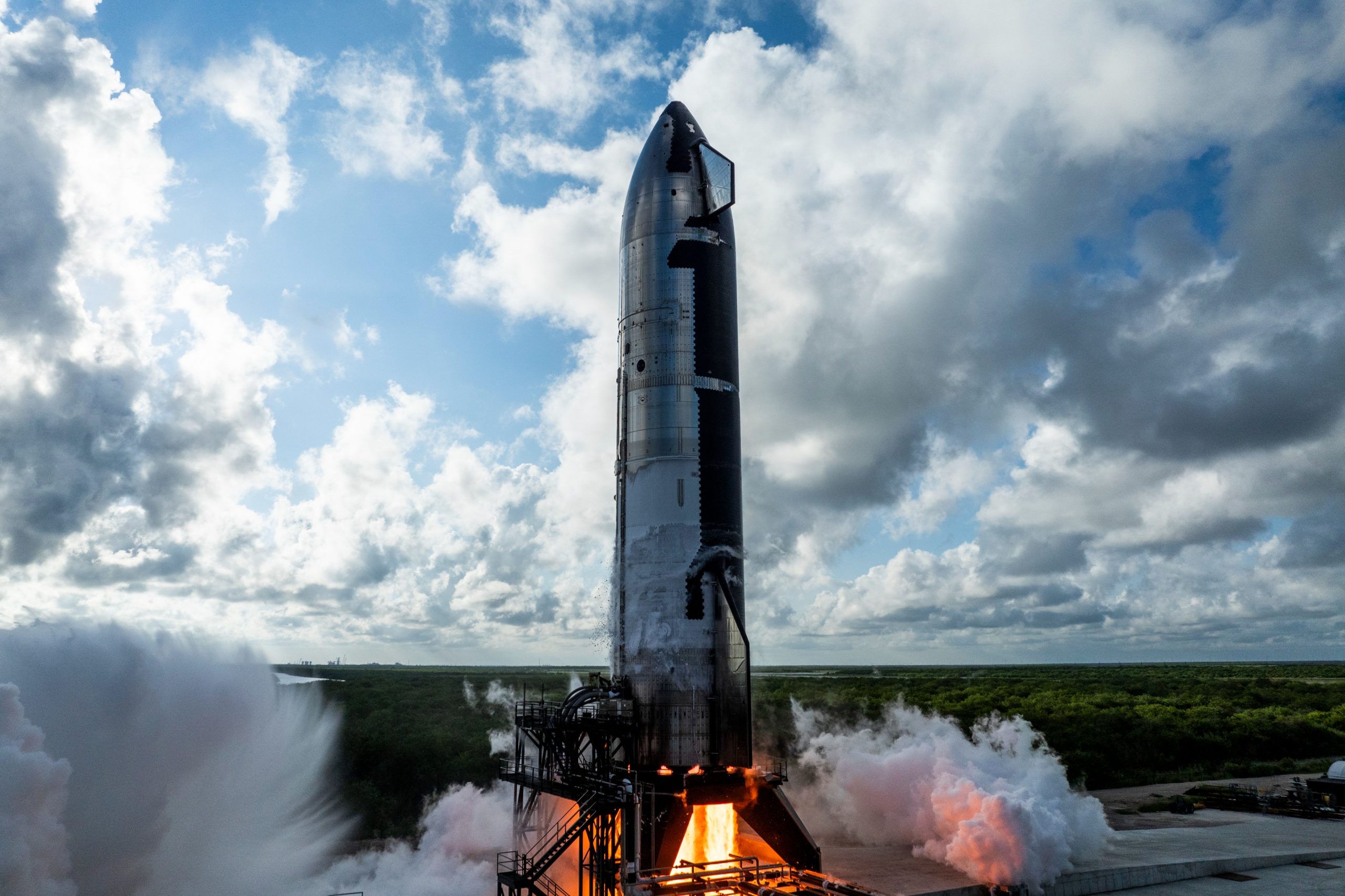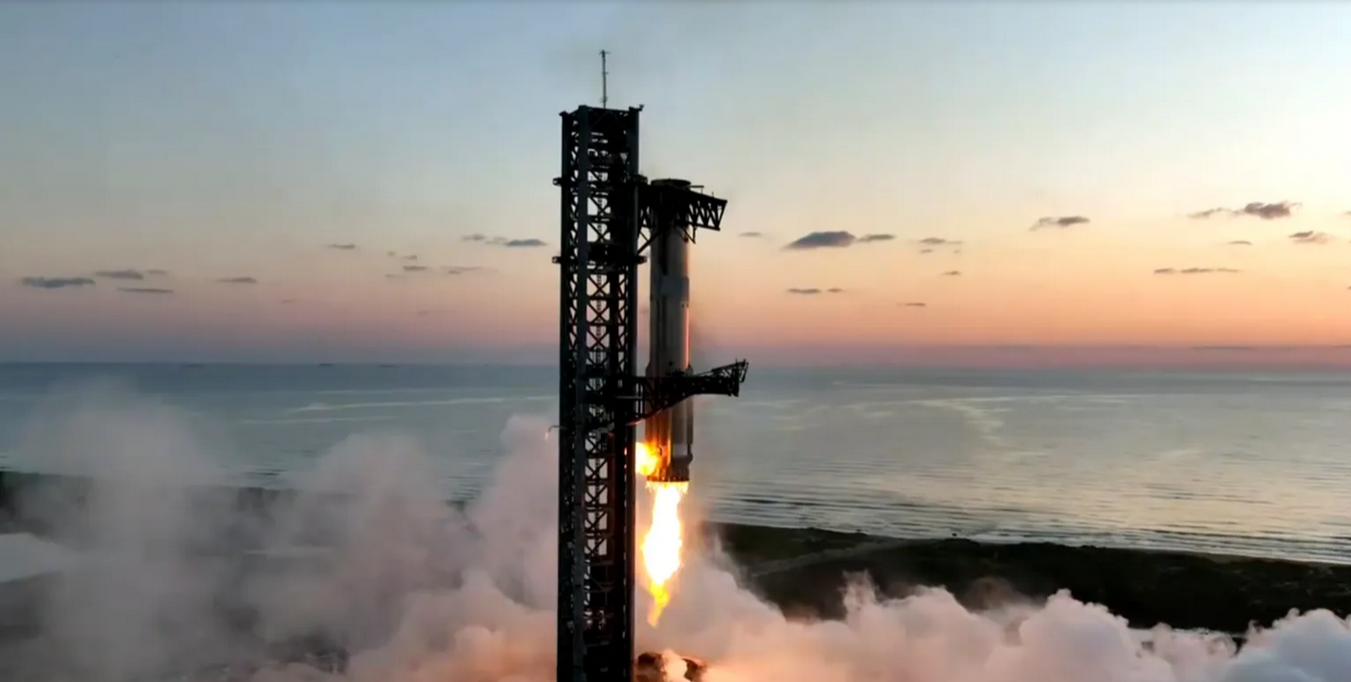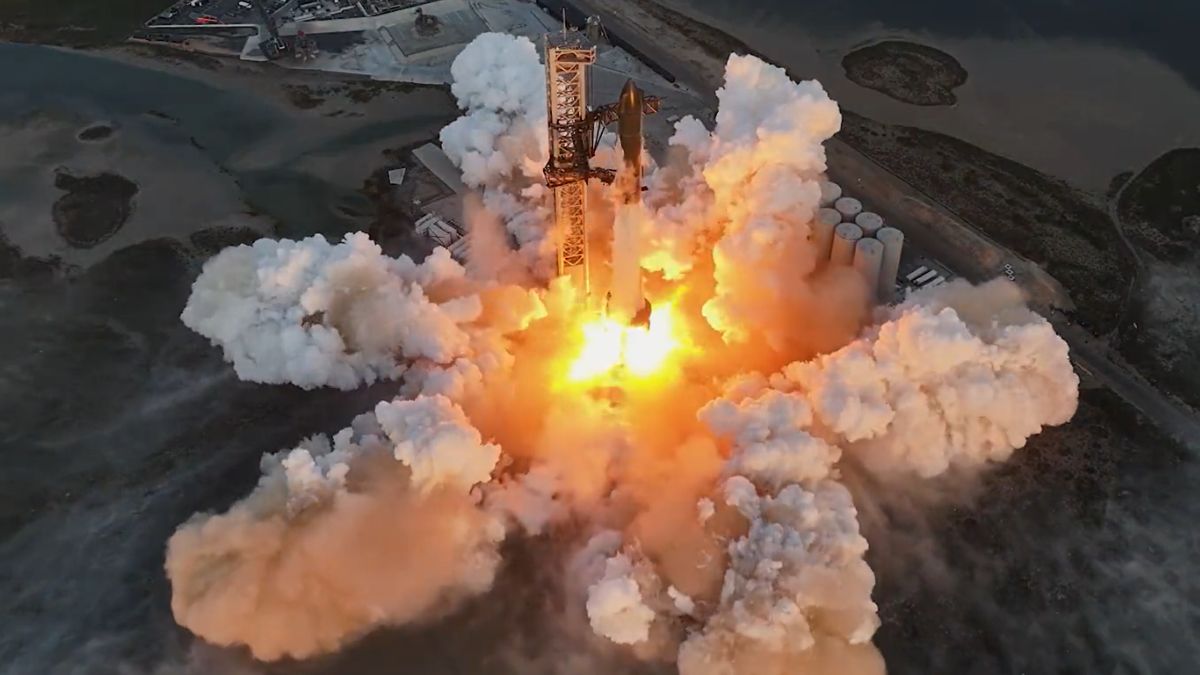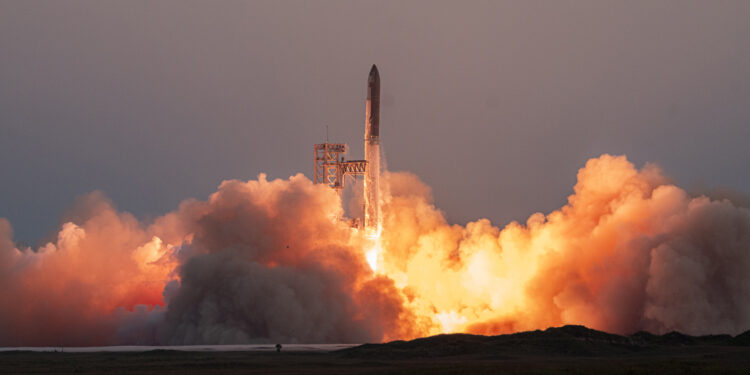In a spectacular display of aerospace engineering, SpaceX’s Starship embarked on its fifth test flight on October 13, 2024, marking a significant milestone in the company’s ambitious goals for space exploration. Launching from Starbase in South Texas, the 400-foot-tall Starship rocket not only soared into the sky but also achieved a groundbreaking maneuver on its return—capturing the Super Heavy booster with the “chopstick” arms of the launch tower.
This unprecedented move came about seven minutes after liftoff, as the Super Heavy booster executed what seemed like a bull’s-eye landing, hovering near the Mechazilla launch tower, which then secured it using its formidable metal arms. Kate Tice, SpaceX’s manager of Quality Systems Engineering, captured the excitement during the live stream, declaring, “This is a day for the engineering history books… On the first-ever attempt, we have successfully caught the Super Heavy booster back at the launch tower.”

Magic in the Air: Starship’s Spectacular Show
The return of the Super Heavy booster wasn’t the only highlight of the mission. Approximately 65 minutes after liftoff, the upper stage of the rocket, known as Starship or simply Ship, performed its own impressive feat. It re-entered the atmosphere, fired three of its six engines to hover over the Indian Ocean, then tipped over and exploded— a planned outcome that SpaceX deemed “the best ending we could have hoped for.”
Elon Musk, the visionary CEO of SpaceX, echoed the sentiment of the mission’s success on X (formerly Twitter), stating, “Big step towards making life multiplanetary was made today.” This flight represents a significant stride towards SpaceX’s broader vision of enabling human life on other planets.

Starship: Paving the Way for Moon and Mars Settlements
SpaceX envisions the Starship as a cornerstone in humanity’s efforts to colonize the moon and Mars. With its full and rapid reusability, Starship stands out as a uniquely potent vessel capable of reducing the time and cost associated with space travel. This characteristic is crucial for frequent and sustainable interplanetary missions, potentially revolutionizing how we approach space exploration.
NASA has placed its trust in Starship as well, selecting it as the first crewed lander for the Artemis program, which aims to return astronauts to the moon. The ambitious Artemis 3 mission, targeted for a September 2026 launch, depends on the reliable performance of the Starship.
Regulatory Hurdles and Future Aspirations
While the success of the flight was celebrated, it’s worth noting that the journey to launch wasn’t without its challenges. SpaceX faced delays from the U.S. Federal Aviation Administration (FAA), which required additional time for a more in-depth review due to changes in the vehicle configuration and mission profile. SpaceX expressed frustration over these delays in a blog post, highlighting the challenges of navigating governmental regulations in an industry striving for rapid innovation.
Despite these obstacles, SpaceX’s persistence and dedication to its goals remain evident. With more test flights on the horizon and a queue of Starships waiting to take to the skies, the company continues to push the boundaries of what’s possible in space travel.

A New Era of Exploration
The successful fifth flight of the Starship is more than just another test; it’s a bold statement about the future of space exploration. With each flight, SpaceX moves closer to a reality where interplanetary travel is not just possible, but commonplace. This mission has once again demonstrated SpaceX’s commitment to innovation and its relentless pursuit of a multiplanetary future for humanity. As we look to the stars, it’s clear that the next chapter of human space exploration is just beginning, with SpaceX leading the way.










